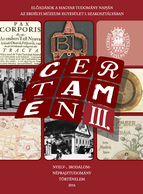
Rövidítésjegyzék és mutatók
The file contains the abreviations used both in the article and in the indexes and the indexes of the names, of the geographical places and of the institutions that are to be found in the articles.
More...We kindly inform you that, as long as the subject affiliation of our 300.000+ articles is in progress, you might get unsufficient or no results on your third level or second level search. In this case, please broaden your search criteria.

The file contains the abreviations used both in the article and in the indexes and the indexes of the names, of the geographical places and of the institutions that are to be found in the articles.
More...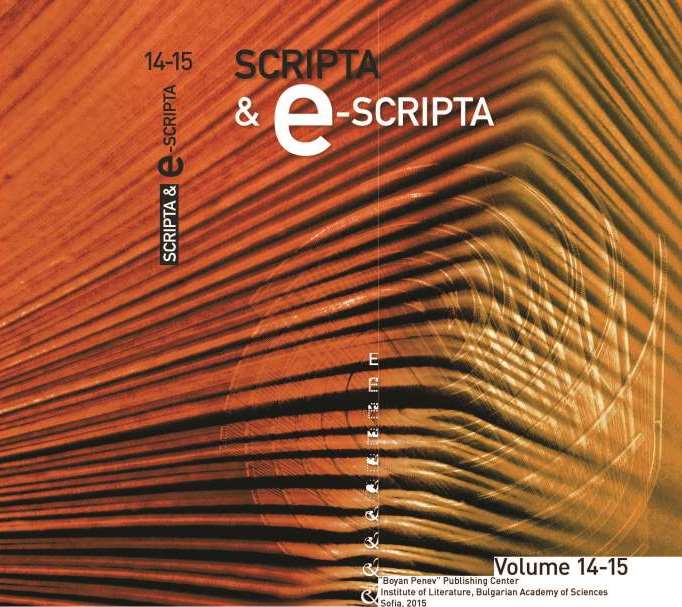
This paper contains the first publication of printed excerpts related to Bulgarian history from two historical compilations by Paulinus of Venice. Chronologia Magna sive Compendium is presented according to lat. 4939, National library, Paris (14th c.) and Satyrica historia – according to Ms 445, Jagiellonian library, Cracow (15th c.). As the study and analysis of these manuscripts demonstrate, the compendia contain many accounts related to Bulgarian history – from the formation of the Bulgarian state in 681 up to the dynastic marriage of the Latin emperor of Constantinople Henry in 1213. All of the motifs from Bulgarian history, which Paulinus selected and included, are significant and fully aligned with the aims, which he had set himself in the prologue to Satyrica historia. These motifs are not merely a compilation of successes and failures, but are to form a body of well researched information, which will serve to edify posterity, based on the historical experience of the Roman and other kingdoms. Interpreting the evidence in Paulinus’ accounts in light of his stated approach, it appears that after their appearance on the European stage (681) the Bulgarians played the role of the defenders of Christian Europe (717) and the armament of God (811 г., 1205 г.). Their joining the Christian family of the European people is also recounted (865) through the example of the determination and beatitude of the Bulgarian ruler who defended the new faith even against his own son. Additionally, the Bulgarians are described as participants in events related to Byzantine history (705), as well as being adversely affected by the expansion of the unconverted Hungarians (907, 970, 1003). The accounts related by Paulinus are re-workings of earlier sources he was apparently well acquainted with. It can be argued that the present publication identified those sources with significant accuracy. The mistakes in the dating that occur in Paulinus’ compilations are often attributable to him connecting events to significant historical episodes or historical personalities, around which he builds a whole chapter or rubric of the narration. Sometimes the anachronisms are due to the sources he used. The study of the context, in which motifs related to Bulgarian history are placed allowed me to identify the sources of the material and the method of compilation employed by Paulinus of Venice. Last but not least, the analysis of the content of the motifs allowed me to establish that Dandolo mainly used information from Historia satyrica, but perhaps also consulted with Chronologia magna. He included in his chronicle almost all the motifs from the works of Paulinus, with the exception of the chronological note on the death of Nicephorus I Genik and the episode on Walter Senzavohir. Thus, the publication of the fragments from Historia satyrica and Chronologia magna clarified the origin of those passages in the chronicle of Andrea Dandolo about which D. Angelov wrote that they are connected to earlier historiographical sources but their origins are in need of further investigation.
More...
The publication opens for discussion an approach to macrostructural analysis of certain calendar miscellanies with selected readings which belong to the Medieval Balkan tradition. The author proposes that the selection of feasts and saints’ commemorations, as well as the order of the corresponding texts might be interpreted as determined by certain overall theme(s) / thematic fields and could be „read“ on the level of the book’s content. This approach was encouraged by the outcomes of a study on the calendar-thematic composition of Damaskenos Studites’s Thesauros and its transformations in Bulgarian literary tradition in the 16th-18th century. Aiming at a search for similar preceding models, the survey makes comparison on macro-compositional level between some panegyrica, such as Mihanović Homiliar and Jagić Zlatoust of the late 13th – early 14th century, the 1358/59 Miscellany of German, and the 16th-century Panegyricon No. 85 from the Bulgarian Academy of Sciences. In addition, the study explores the relevancy of a method for visualisation, which can be supportive of a thematic analysis.
More...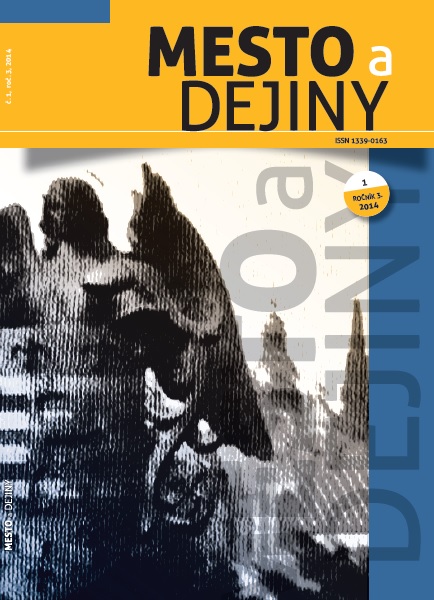
Between Moravia and Prussia there was an important medieval route passing through the economic and political centres (Olomouc, Opava, Raciborz, Krakow and Torun). A very important medieval route existed between Moravia and Prussia, connecting the economic and political centres (Olomouc, Opava, Raciborz, Krakow and Torun). Situation on this road made it possible to research the continuous material and ideological transfer, the existence of which is evident from the archaeological finds in Opava region. We have compiled three thematic groups of artefacts which include utility ceramics, numismatic material, and sacral artefacts used by pilgrims. Within the identified system, various groups of travellers including merchants, artisans, diplomats and pilgrims can be detected.
More...
According to the charter issued by Andrew, Bishop of Eger, the Košice burghers were exempted from jurisdiction of Archdeacon of Abaujvár in 1290. Circumstances connected to its origin and then comparison with other charters containing similar privilege seem to be essential factors leading to better understanding of the source. Hereby a very detailed analysis of the text might say more to explain its meaning. Therefore, the cognoscible context of exemptions with the examination of circumstances leading to the issuance of the charter in 1290, along with consideration of the words written in the text, encourage the opinion that the burghers of Košice had been exempted from jurisdiction of Abaujvár´s Archdeacon even before. The Bishop´s charter seems to be only a confirmation of the right allowed earlier, which was a common phenomenon in the towns (or in the communities of guests) of the Hungarian Kingdom.
More...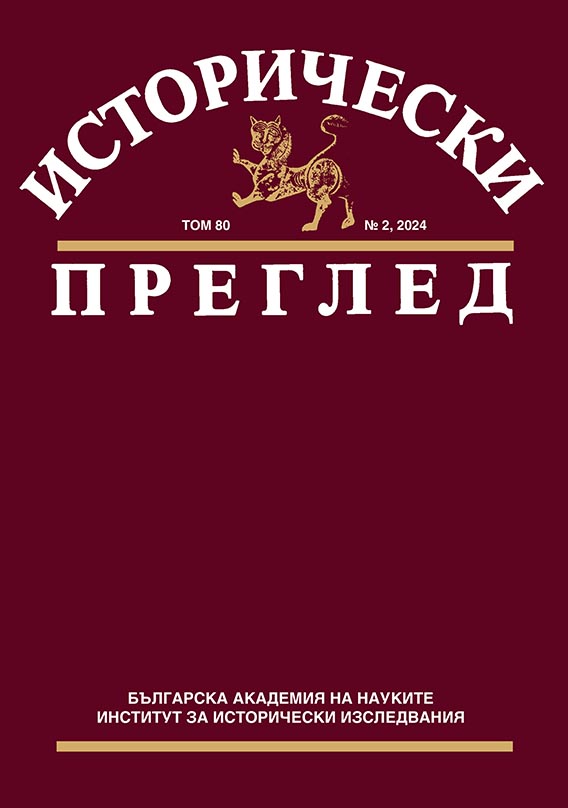
The group of Arabic medieval authors critiqued and condemned the practices of Islam among the Berber tribes in North Africa. This article delves into the medieval debate surrounding Berber Islam, exploring key themes and interpretations of Arab-Berber relations and the unique aspects of intra-religious dynamics in the medieval Islamic West. Through a comparative analysis, it examines medieval Arabic perspectives on the origins of the Berbers, the nature of Berber Islam, accusations of heterodoxy, and the perceived absence of urban culture. The essay also explores Arab authors’ perspectives on Berber rule during the Almoravid (1054–1147) and Almohad (1121–1269) periods. By examining polemical examples, it sheds light on the intricate political landscape of the Maghreb. A detailed investigation into the characteristics of Berber Islam provides insights into the Arab approach to governance in the region, as well as the successes and shortcomings thereof. The consistent negative portrayal of Berbers in Arabic narratives underscores underlying issues within the medieval Islamic politico-religious framework.
More...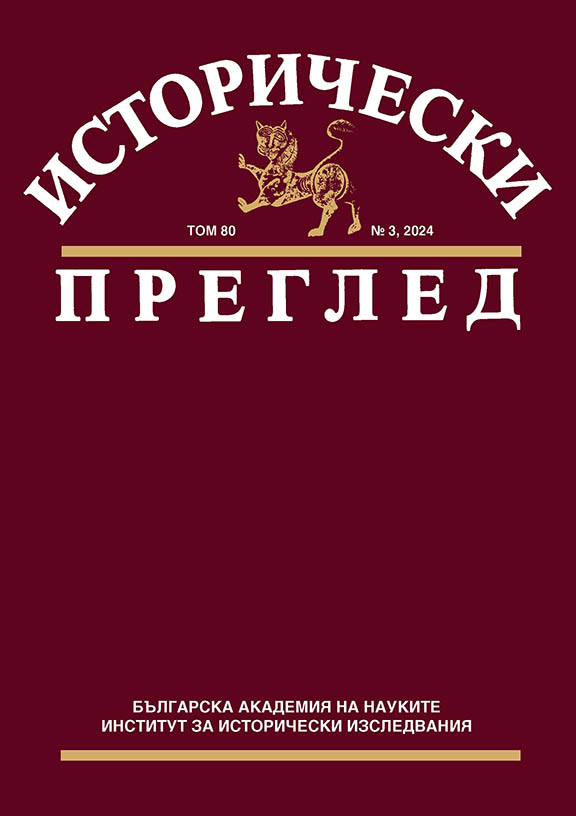
Book review: Penka Danova. Bulgaria and the Bulgarians in Italian historiography (XIV–XVII centuries). Sofia: Institute for Historical Studies, 2023
More...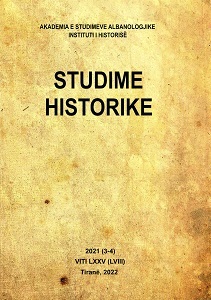
The Ottoman Empire administered Nis and its surroundings for a very long period, more precisely from 1389 to 1878. Based on Ottoman archival sources, published works, and field studies, many cultural and social monuments of that period come to light. The number of waqf monuments that were built and registered in Serbia, Montenegro, and Sandzak (Novi Pazar) (New Yugoslavia) during the Ottoman period is 1,140. While the number of monuments that have managed to survive until today it is only 30. In Nis alone, it is mentioned that a total of 23 mosques, 2 madrasas, 4 schools, 7 tekkes, 2 public canteens (imaret), an inn, 2 hamams, 3 fountains, a castle, and a bridge have been destroyed. Therefore, the figures given in the paper do not necessarily mean to extract all the monuments of that period, because there are still many documents in different archives that researchers are expected to use in the future in order to complement the historiography, however, we hope that this study will help to fill a part of that gap.
More...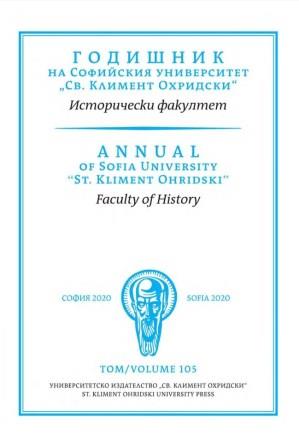
Литературната дейност, която се развива в рамките на Охридската архиепископия през периода от нейното възникване в началото на XI в. до времето, когато Димитър Хоматиан заема архиепископския престол в Охрид (началото на XIII в.), е разнообразна и богата Важно място в нея заемат въпросите, свързани с делото на светите братя Кирил и Методий и пренасянето на това дело в България по времето на княз Борис I. Това се дължи на факта, че тези въпроси са били използвани от охридските архиепископи за отстояване на независимия статут на архиепископията по отношение на Константинополската патриаршия. От най-съществено значение за проследяване на кирило-методиевската тема в съчиненията на висшия църковен клир, оглавявал архиепископията през разглеждания период, са следните извори: Климент Охридски, известно още като Дългото житие на Климент, написано от архиепископ Теофилакт през XI в.; 2) Запазеният списък на охридските архиепископи, съставен в средата на XII в. по времето на архиепископ Йоан Комнин (т.нар. Дюканжов списък); и 3) Краткото житие на свети Климент Охридски, написано през XIII в. от архиепископ Димитрий Хоматиан.
More...
The history of the Ohrid Archbishopric, which researchers have been studying for more than two centuries, is a favourite topic of Slavists (historians, theologians, art historians). In different chronological periods, this Byzantine archbishopric has been the central object of the claims of the Byzantine, Bulgarian and Serbian churches. The importance of the archbishopric also depended on the extent of the territory under its jurisdiction. The function of the archbishopric was ecclesiastical and political. It acted not only as an autocephalous ecclesiastical organization, but also as an institution supporting political structures.
More...
The paper treats the issue on the reconstruction of the image of Tsar Samuel from the perspective of the Ohrid Archbishopric. The snapshots from the sources starting from Basil II’s sigillia and other official acts, reveals that the representation of Samuel was largely shaped in accordance with the ideological concept of the Ohrid Archbishopric. Depending on the political constellation and the momentary aims of the ideological propaganda, Samuel was either recognized as the fundamental ruler and inseparable part of the traditions of the Ohrid Archbishopric, or was completely excluded within the constructed theories about the origin оf the Archbishopric. The leading people in the Ohrid Archbishopric constantly modified and constructed the ecclesiastical traditions for the purpose of reinforcing the position and the status of the Archbishopric, in which the Christian saints were also exploited. This tendency also found reflection in the alteration of the original legend about Vladimir and Kosara, that served Archbishopric’s pretensions for obtaining the leading role among the Orthodox Christians in the Balkans. Hence, from the reading of the official works composed for or from the Ohrid Archbishopric we can notice the tendency for adapting, constructing and manipulating the traditions emerging from Samuel’s political and ideological program, that involved the cults and legends originating in Prespa and Ohrid, wherefrom we receive opposed and distorted images of Samuel. Their deconstruction is the main goal of this paper.
More...
The first graffito-drawing, from the northern gallery, that we present here contains a heraldic eagle. Byzantium inherited from Rome the use of the one-headed eagle as one of the emblems of imperial power, but it seems that its use as a military insignia disappears too quickly. However, the reliefs, as well as the miniatures, retain the tradition of the one-headed eagle for a long time. Due to the fashion of the eastern fabrics, which turned the two-headed eagle into dominate ornament on the palace garments during the Komnenian period, the usual one-headed eagle was almost completely replaced by this new, imaginary version. The body of the graffito eagle has a teardrop shape and with its almost round top finds a close parallel to some of the eagles on the eastern tissues. However, other details point out to the Byzantine tradition of embroidered silk textiles and reliefs. All this could points to a relative dating of the graffito between the 10th and 13th century.The second graffito is a double-headed eagle standing in heraldic pose from the southern gallery. The graffito drawing represents later image of a crowned double-headed eagle, since the examples with such a motif are more common in the 14th and 15th centuries, when it appears on marble reliefs, textiles with embroidery, seals, coins, sgraffito ceramics and manuscript illustrations. From the end of the XIV – the beginning of the XV century one can find that the heads of double-headed eagles begin to appear with crowns or, very often, a little lily. Based on all the details, but most of all the wings and the shape of the torso, as well as the spur on the left leg, it is possible to accept the relative dating of the first of the graffiti drawings within a time span between the 14th – 15th centuries. The Greek inscription (Tornikios) could hypothetically linked some representative of the famous Armenian (or Georgian) family with the depicted two- headed eagle.It seems to me that in the ornitomorphic-graffiti from the Church of Hagia Sophia is impossible to see nothing than a general image of power or a triumph of good.
More...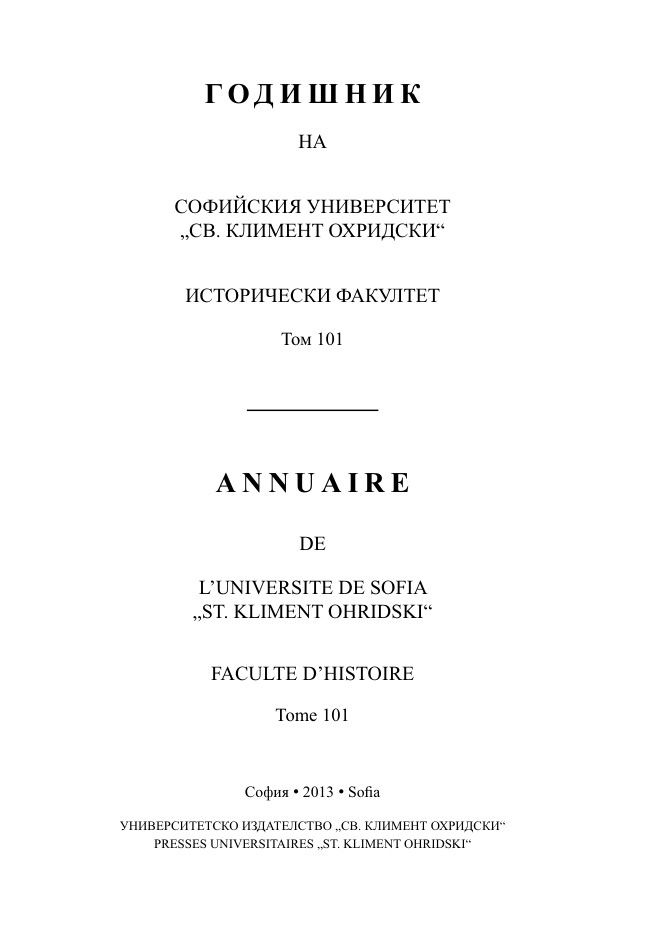
The legacy of the most prominent Bulgarian Church historian, Ivan Snegarov (1882–1971) has not been an object of an extensive and detailed analysis until recently. The article Ivan Snegarov – Life and Historical Work is an attempt to fulfi ll this lack and presents a brief outline of the author’s PhD dissertation with the same title. The article is divided onto three parts: the first one (entitled Life) is a biography of Snegarov, the second (The Various Periods of the Bulgarian History in Ivan Snegarov’s Works) – analysis of his major historical works, and the third (Into the Constructive Laboratory of the Historian Ivan Snegarov) – synthesis of the most essential trends and ideas in Snegarov’s writings.
More...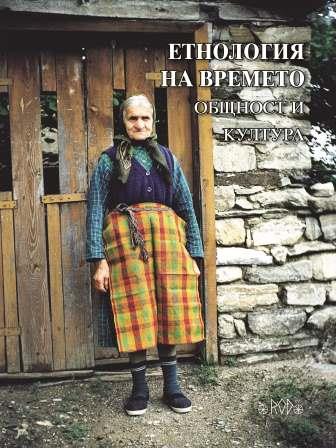
The archeological site ,,Mal Kayasi“ is located in the area of the village Bansko. It is a Late Antique fortification that was also operational during the Middle Ages. The fortress is located on one of the protruding hills on Mount Belasica, about 0,7 km southwest of the Roman Thermal spa. Some authors, here locates the Termica fortress (Θερμιτζα), which is mentioned in the chronicles of John Skylitzes, as one of the most important fortresses used by Tsar Samuel in the Strumica area. The first archaeological excavations were conducted during 2017, and then during 2019. A small part of the northwestern side of the acropolis was uncovered, where the late Antique fortress is located, as well as a single-nave church, which is located about 70 meters south of the fortress. According to the primary knowledge, this sacral building was built in the 12th–13th century and existed, probably until the Ottoman conquests of this area. It is built of slabs of stone, and lime mortar is used as a binder. The church was covered with frescoes. Two layers of frescoes have been found. A small single-nave church was built for the spiritual needs of the crew in the medieval fortress, or it was part of a small monastery complex.
More...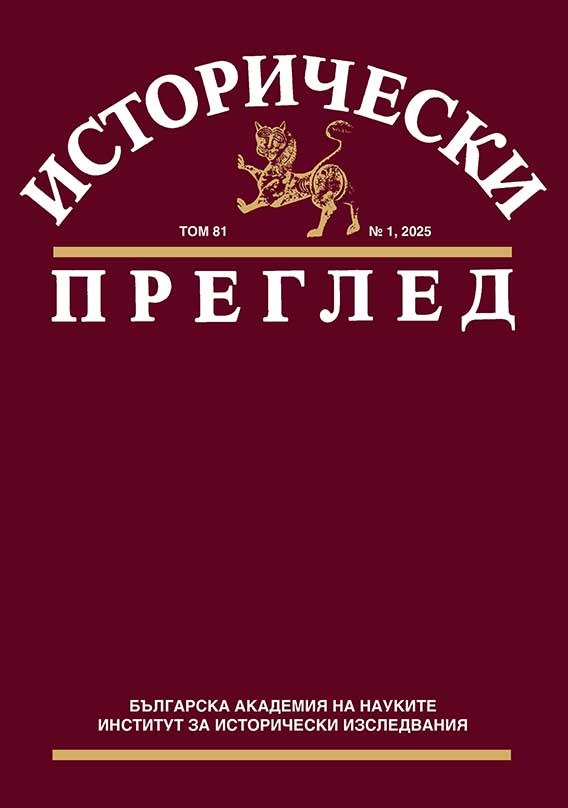
The article examines the content of a chrysobull allegedly issued by the Serbian Despot of Serres, Jovan Uglješa (1360–1371), for the Athonite Monastery of Simonopetra. The original document is lost, and the only surviving version is a copy authenticated by the Patriarch of Constantinople, Cyril I Loukaris, in 1623. This patriarchal confirmation charter presents a text supposedly issued by Jovan Uglješa 359 years earlier, in 1264. Beginning with this evident chronological discrepancy, the article analyzes the text of Loukaris’s corroborated copy and evaluates which elements of this potentially forged document may be regarded as authentic and which must be dismissed as inconsistent or anachronistic.
More...
This article examines the origins and application of the Ottoman agro-fiscal unit known as the “pair of oxen.” Its roots can be traced to the agricultural practices and taxation policies of pre-Ottoman societies, including the Byzantine and Seljuk empires, as well as earlier civilizations such as the Roman and ancient Persian societies. Historically, the pair of oxen served as a benchmark for assessing the productive capacity and wealth of farmers, forming the basis for taxation. The author provides examples illustrating that this system persisted in the Bulgarian lands until the very end of Ottoman rule.
More...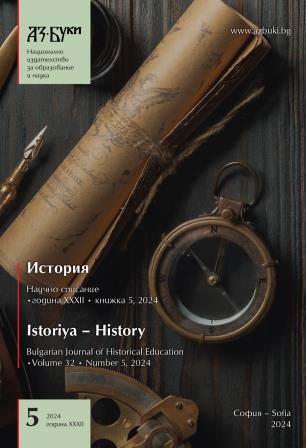
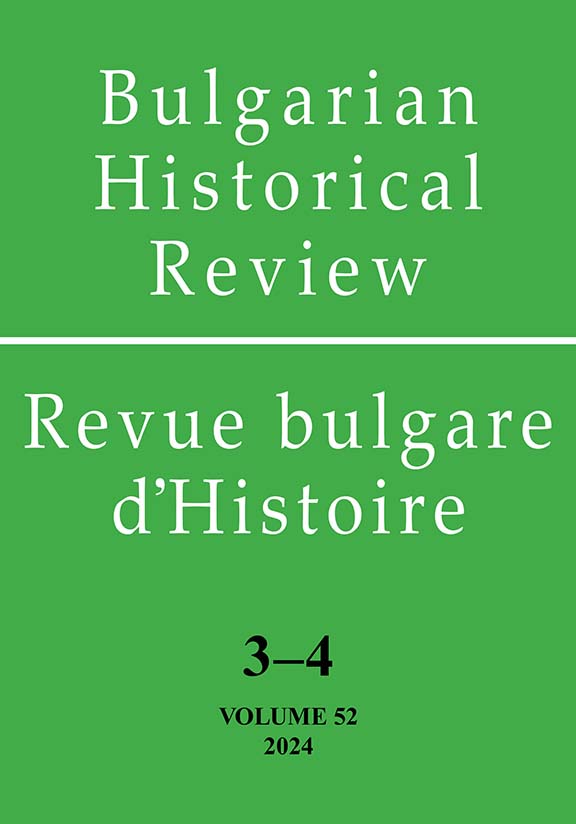
Review of:TODOROVA, O., 2021. Domestic Slavery and Slaveholding in Ottoman Rumelia. Sofia: Gutenberg Publishing House. 444 pp. ISBN 978-619-176-195-1 [In Bulgarian].
More...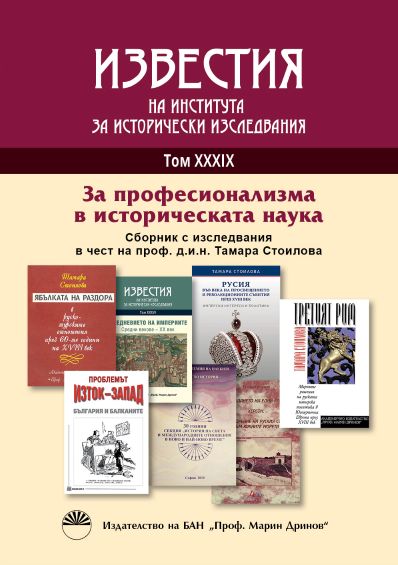
Considering that the historical periodization of Scandinavia is not yet conventionally set, the earliest human occupation of Northern Europe is also uncertain and has been the subject of intense debate for a long time. The Norse were the first to reach the region; however, the Viking sagas were recognized as poorly documentary sources beyond their role in providing information about their cultural and societal models. The number of Scandinavian written documents is rather limited especially before the fourteenth century. After the twelfth century, a substantial number of works appeared mainly as a result of European influence due to the process of Christianization and the new dynasty system. Nevertheless, the blooming of such historical writings in Sweden began in the first half of the eighteenth century. Тhey presented the product of the efforts of remarkably distinguished array of scientists, who established fruitful scientific relationships with the academies of the prominent European countries. Olof von Dalin popularized the ideas of the Enlightenment, which he expressed in his easily readable works, rising to popularity among the modern Swedish society. Even though historical texts revealed a lot of interesting information about the major events of the past, these writings were often distorted by the personal opinions and perspectives of the authors. Such books (like Rudbeck’s “Atlantica”) boosted the patriotic theory that Sweden is indeed the cradle of civilization. Correspondingly, this study looks not only at the classic historical works of undoubted scholarship, but also at the contemporary criticism towards different scientific dogmas of previous times.
More...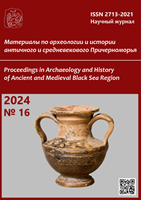
The purpose of the paper is to introduce the numismatic record from Aspara city-site (Kazakhstan) into scholarly discussion. The coins were collected during archaeological research in 2021—2023. For the first time since 1964, 43 coins were discovered, including 33 attributable finds. With the aim to assess the relative level of commodity-money relations in medieval Aspara, comparative analysis of numismatic record from the medieval city of Nuzket (Shish-tube city-site in Kyrgyzstan) was carried out. The attributable coins from Aspara belong to the following states: the Türgesh Qaghanate, the Tang dynasty, the Samanids dynasty, the Eastern Qarakhanid Qaghanate, the Qara Khitai, the Northern Song dynasty, the Chaghataid Khanate, the state of Amir Timur, and the Khoqand Khanate. The Khoqand coin was lost in Aspara when the city no longer existed. The authors have established the fundamental possibility of the beginning of the activation of commodity-money relations in Aspara in the 8th century. It was recorded that the coin circulation has been interrupted there at least three times: first in the 9th century, then from the late 10th to the mid-11th century, and finally from the second decade of the 13th to the early 14th century. Commodity-money relations ceased in the early 15th century (apparently, after the death of Amir Timur). There is a need for further study of this archaeological site.
More...